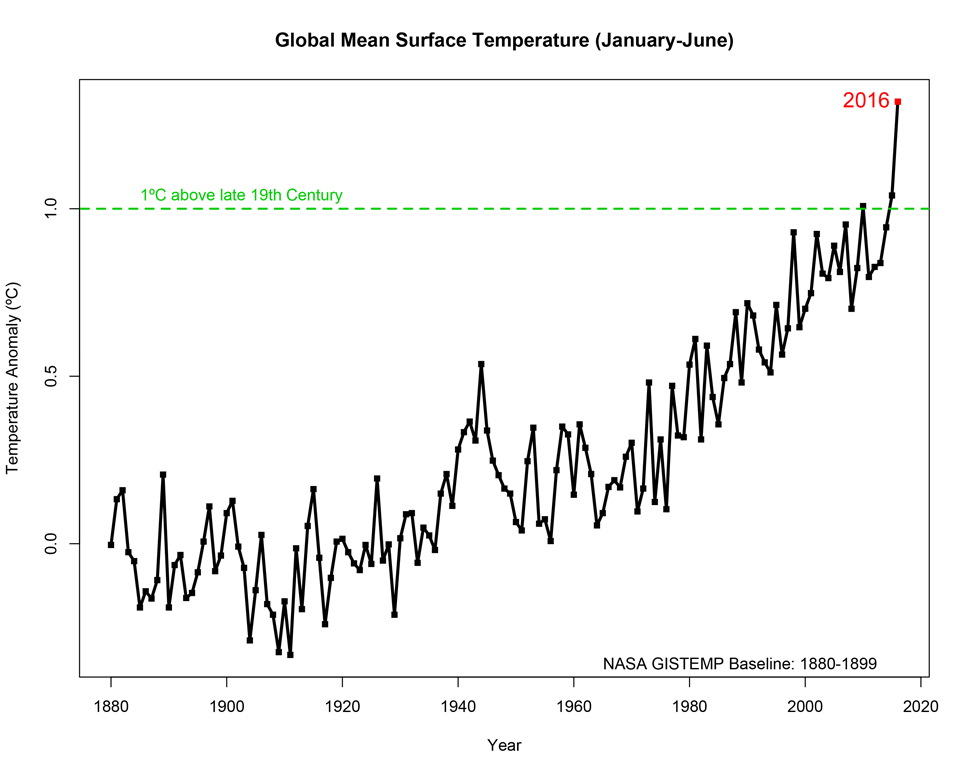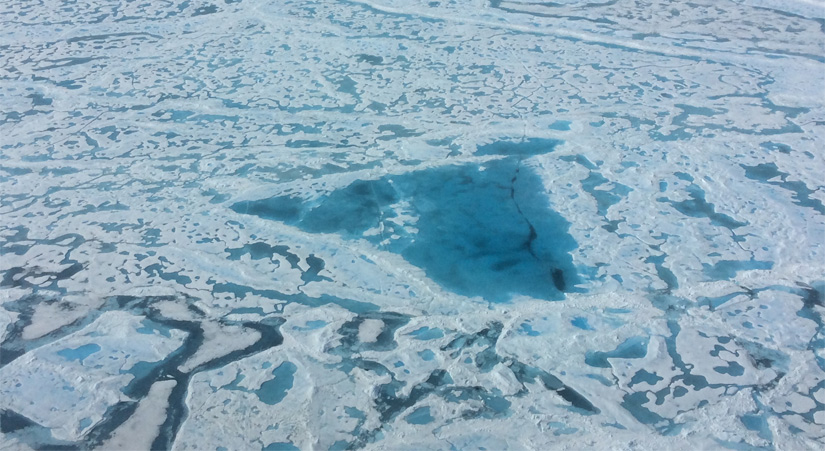
20th July 2016 2016 climate trends continue to break records Two key climate change indicators – global surface temperatures and Arctic sea ice extent – have broken numerous records through the first half of 2016, according to NASA analyses of ground-based observations and satellite data.
Each of the first six months of 2016 set a record as the warmest respective month globally in the modern temperature record, which dates to 1880, according to scientists at NASA's Goddard Institute for Space Studies (GISS) in New York. The six-month period from January to June was also the planet's warmest half-year on record, with an average temperature 1.3°C (2.4°F) warmer than the late nineteenth century. Five of the first six months of 2016 also set records for the smallest monthly Arctic sea ice extent since consistent satellite records began in 1979, according to scientists at NASA's Goddard Space Flight Centre in Greenbelt, Maryland. The one exception, March, recorded the second smallest extent for that month. While these two key climate indicators have broken records in 2016, NASA scientists said it is more significant that global temperature and Arctic sea ice are continuing their long-term trends of change. Both trends are ultimately driven by the rising concentration of heat-trapping carbon dioxide, which has increased by 40% since pre-industrial times, along with various other greenhouse gases in the atmosphere.
The extent of Arctic sea ice at the peak of the summer melt season now typically covers 40% less area than it did in the late 1970s and early 1980s. Arctic sea ice extent in September, the seasonal low point in the annual cycle, has been declining at a rate of 13.4% per decade. "While the El Niño event in the tropical Pacific this winter gave a boost to global temperatures from October onwards, it is the underlying trend which is producing these record numbers," said GISS Director, Gavin Schmidt. Previous El Niño events have driven temperatures to what were then record levels – such as during 1998. But in 2016, even as the effects of the recent El Niño taper off, global temperatures have risen well beyond those of 18 years ago because of the overall warming that has occurred since then. The global trend in rising temperatures is outpaced by the regional warming in the Arctic, according to Walt Meier, a sea ice scientist from NASA Goddard: "It has been a record year so far for global temperatures, but the record high temperatures in the Arctic over the past six months have been even more extreme," says Meier. "This warmth, as well as unusual weather patterns, has led to the record low sea ice extents so far this year."
NASA tracks temperature and sea ice as part of its effort to understand the Earth as a system and to understand how Earth is changing. In addition to maintaining 19 Earth-observing space missions, the agency also sends researchers around the globe to investigate different facets of the planet at closer range. Right now, NASA researchers are working across the Arctic to better understand both the processes driving increased sea ice melt and the impacts of rising temperatures on Arctic ecosystems. NASA's Operation IceBridge campaign last week commenced a series of airborne measurements of melt ponds on the surface of the Arctic sea ice cap. Melt ponds are shallow pools of water, seen in the photo below, that form as ice melts. Their darker surfaces absorb more sunlight and accelerate the melting process. IceBridge is flying out of Barrow, Alaska, during the melt season to observe these at a scale never before achieved. Recent studies have shown that the formation of melt ponds early in the summer is a good predictor of the yearly minimum sea ice extent in September. "No one has ever, from a remote sensing standpoint, mapped the large-scale depth of melt ponds on sea ice," said Nathan Kurtz, IceBridge's project scientist and a sea ice researcher at NASA Goddard. "The information we'll collect is going to show how much water is retained in melt ponds and what kind of topography is needed on the sea ice to constrain them, which will help improve melt pond models."
---
Comments »
|










